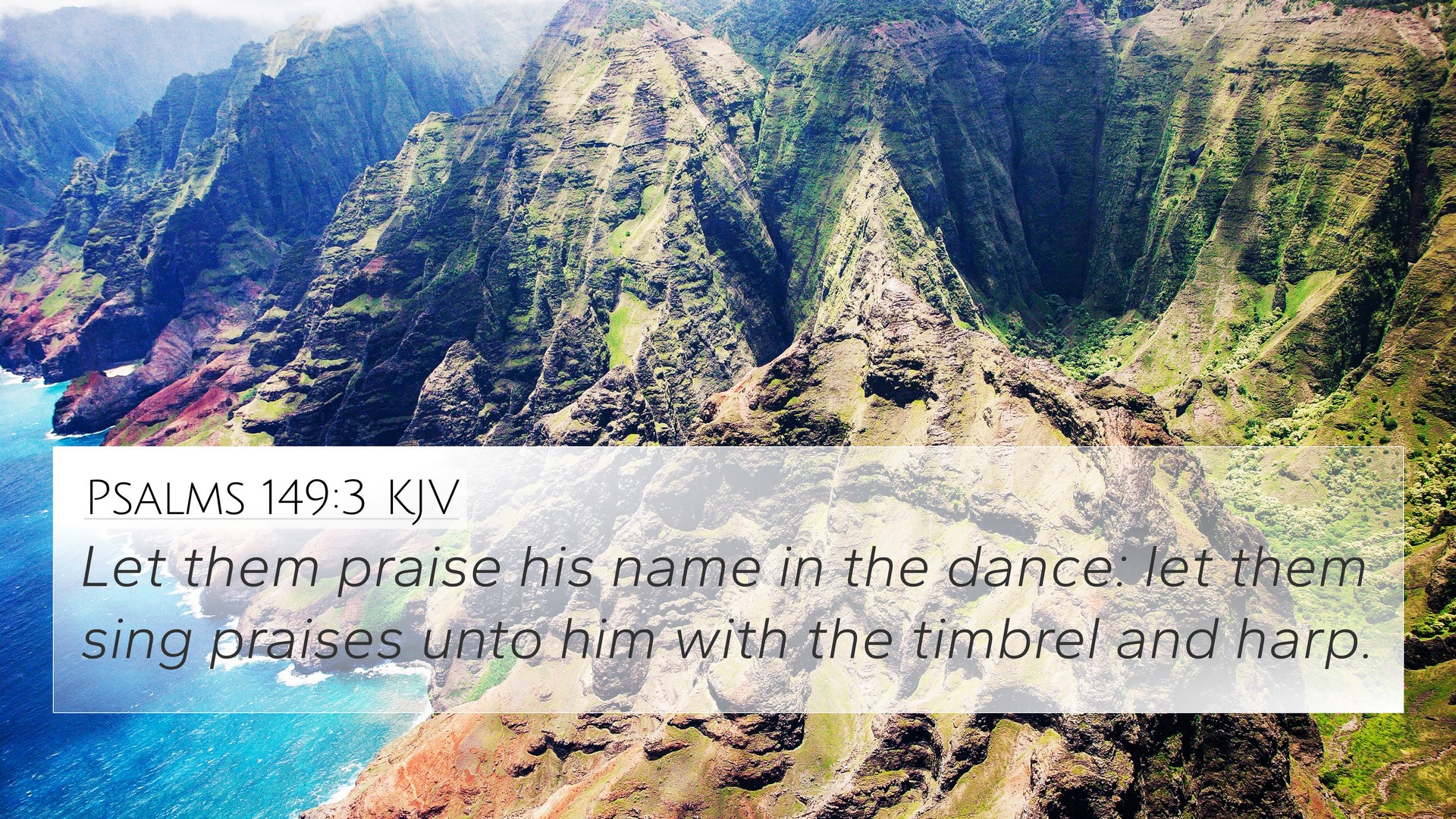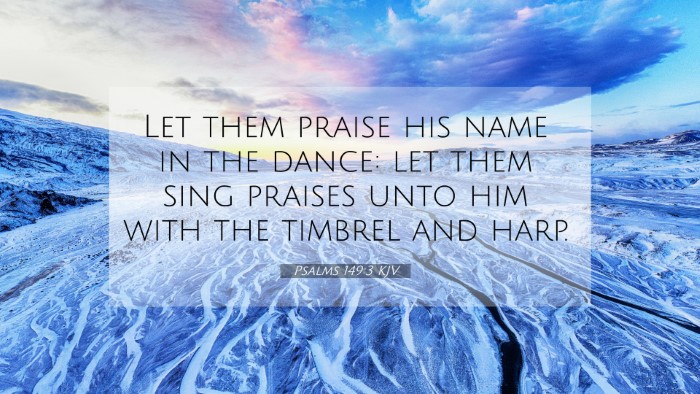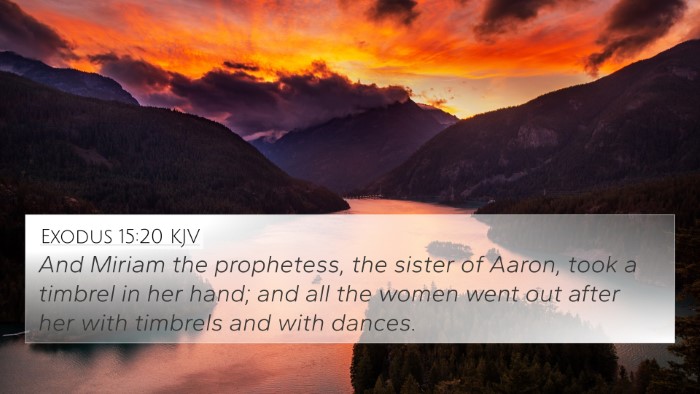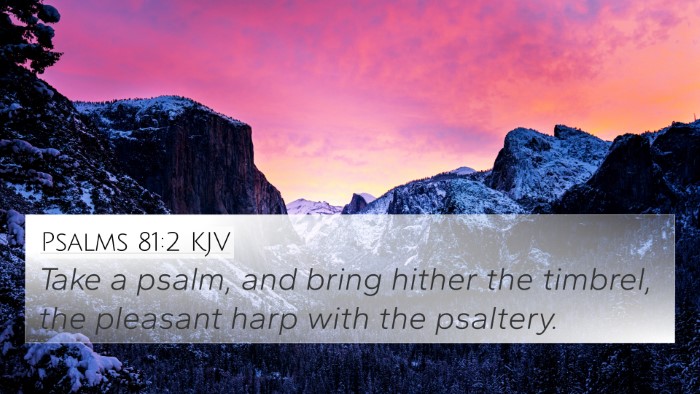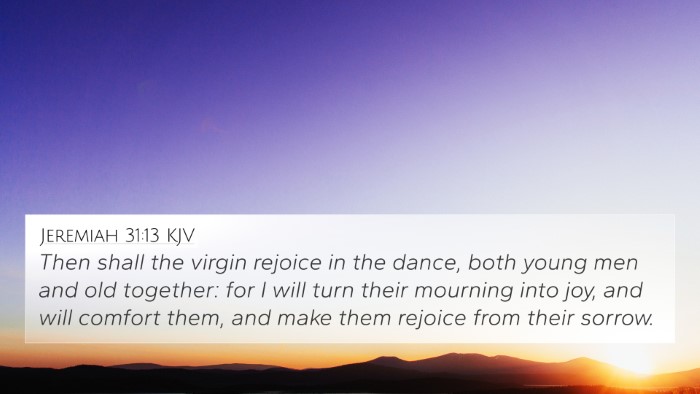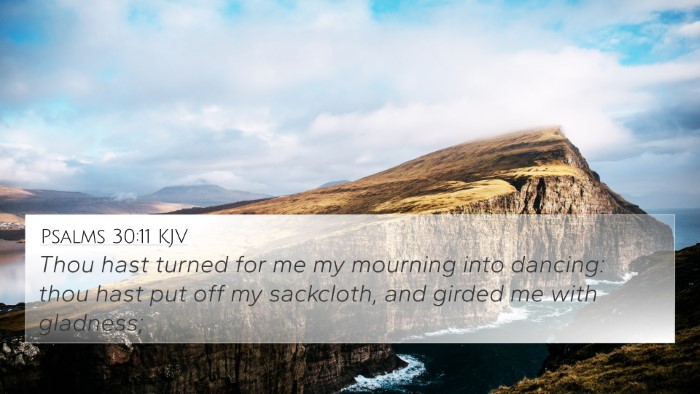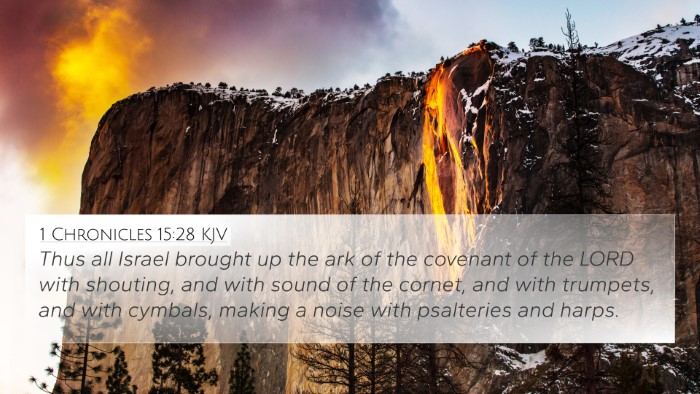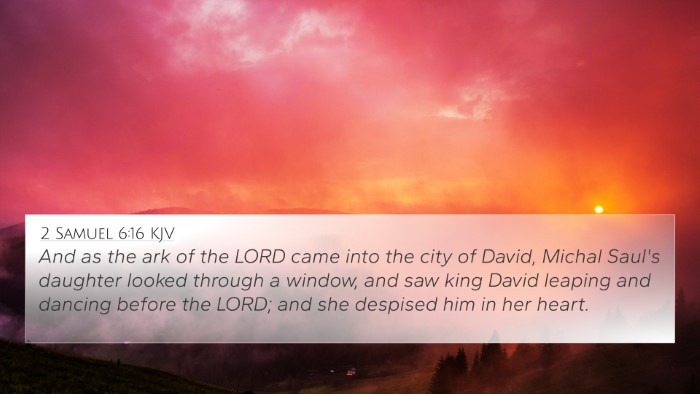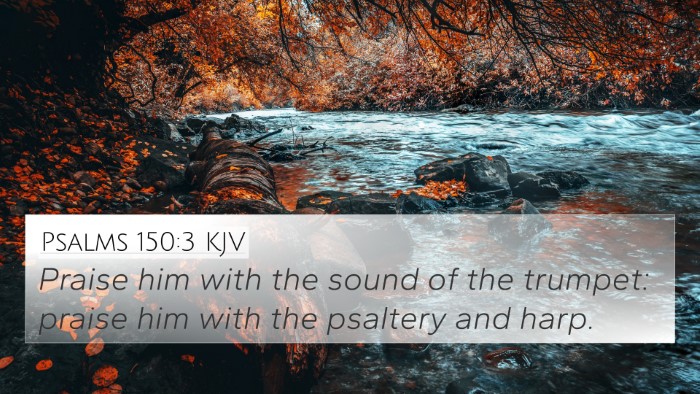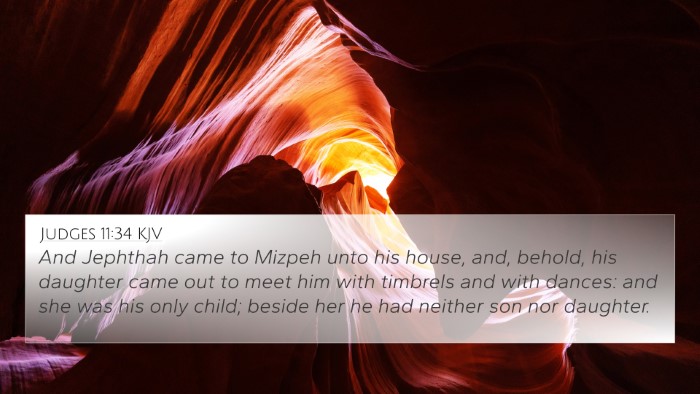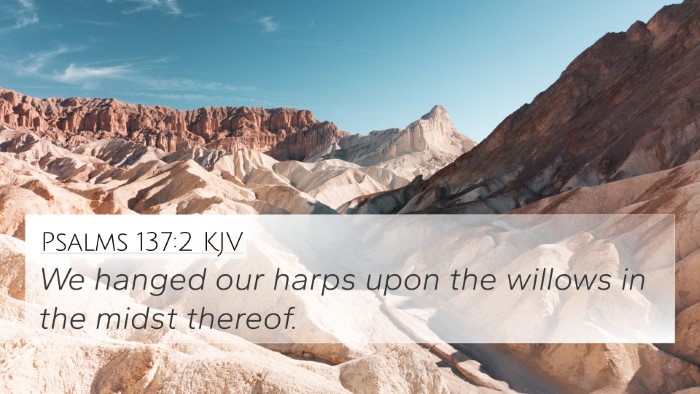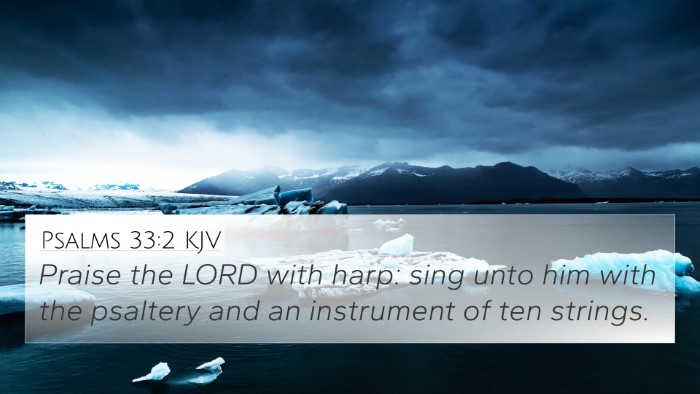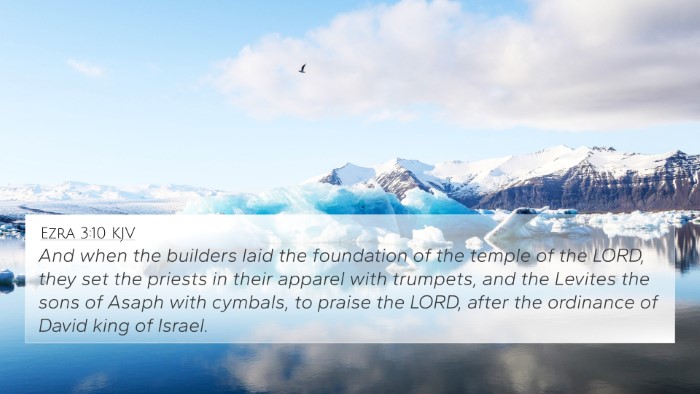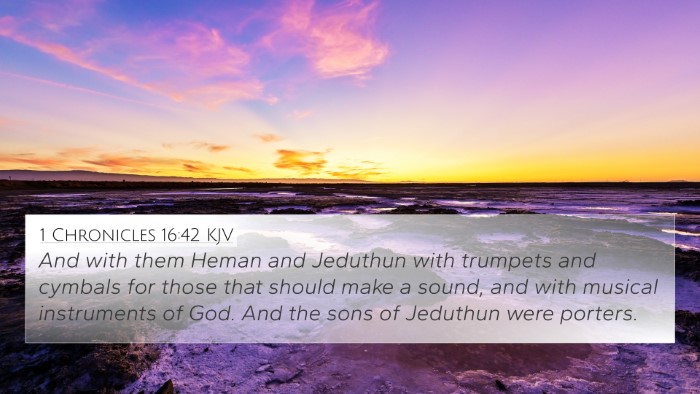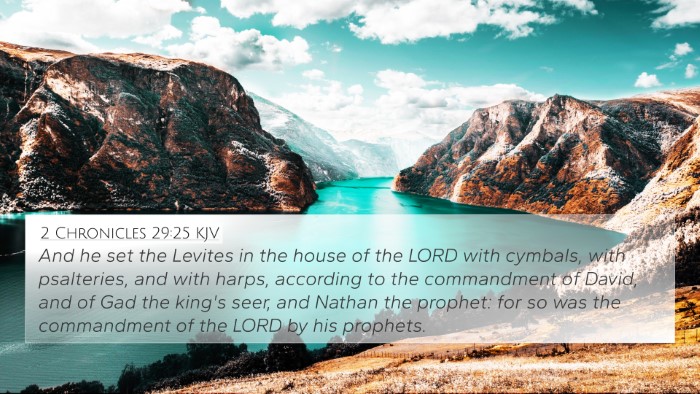Psalms 149:3 - Understanding the Verse
Bible Verse: Psalms 149:3 - "Let them praise His name in the dance: let them sing praises unto Him with the timbrel and harp."
Meaning and Insights
The verse emphasizes the importance of joyful expression in worship. Here, the psalmist calls for praise to God through dance and music. This aligns with the broader theme of celebration and worship found throughout the Psalms and the Bible as a whole.
Contextual Analysis
This psalm is part of a group of psalms that celebrate the greatness and majesty of God. The call to worship through dance and music illustrates how integral these forms of expression are to the life of faith.
Combined Insights from Public Domain Commentaries
Matthew Henry highlights that the act of praising God through dance is not merely physical but a heartfelt expression of joy and gratitude for His goodness. He notes that praise should be exuberant and engaging, reflecting the depth of one’s worship.
Albert Barnes emphasizes the instruments mentioned, such as the timbrel (tambourine) and harp, pointing to the cultural practices of the time and how they contribute to a robust expression of worship. He underscores that these forms of music serve to uplift and inspire those who participate in corporate worship.
Adam Clarke remarks on the significance of communal worship practices, encouraging believers to rejoice collectively. He notes that such expressions can foster community among worshippers, reinforcing their relationships with God and each other.
Thematic Bible Verse Connections
Psalms 149:3 can be connected to various biblical themes and verses:
- Psalms 150:4 - Praise Him with timbrel and dance; praise Him with stringed instruments and flutes.
- Isaiah 61:3 - To give them beauty for ashes, the oil of joy for mourning, the garment of praise for the spirit of heaviness.
- 2 Samuel 6:14 - And David danced before the Lord with all his might; and David was girded with a linen ephod.
- Exodus 15:20-21 - Miriam the prophetess... took a timbrel in her hand; and all the women went out after her with timbrels and with dances.
- Ecclesiastes 3:4 - A time to weep and a time to laugh; a time to mourn and a time to dance.
- James 5:13 - Is any among you afflicted? let him pray. Is any merry? let him sing psalms.
- Psalm 30:11 - You have turned for me my mourning into dancing; you have put off my sackcloth and clothed me with gladness.
Cross-Referencing Biblical Texts
Cross-referencing this verse with other texts can reveal deeper theological insights. Here are ways to apply tools for Bible cross-referencing:
- Utilize a Bible concordance to locate similar themes and expressions of joy in worship.
- Explore a Bible cross-reference guide to find related passages that discuss worship through music and dance.
- Engage in cross-reference Bible study to enrich your understanding of worship's role in biblical communities.
- Employ a Bible reference resource to identify concordant themes in Old and New Testaments regarding joy and worship.
- Utilize Bible chain references to link various scriptures discussing the instrumental praise and communal celebration.
Comparative Bible Verse Analysis
To engage in a more detailed study, consider how to find cross-references in the Bible:
- Identify connections between Old Testament celebrations and New Testament expressions of worship.
- Explore detailed cross-references between the Gospels concerning worship practices.
- Analyze how various epistles correlate to themes of joy and praise in collective worship settings.
- Consider links between prophetic writings and apostolic teachings concerning worship and community.
- Investigate how Psalms cross-reference with New Testament teachings regarding the meaning of praise.
Application for Believers
Understanding Psalms 149:3 enriches a believer’s worship life. It serves as a reminder that worship is an active engagement of the spirit, mind, and body, inviting individuals to fully participate in the joy of praising God.
Conclusion
Psalms 149:3 stands as a testament to the celebratory nature of worship. By combining insights from various commentaries and exploring scriptural connections, believers can deepen their understanding and practice of worship.
